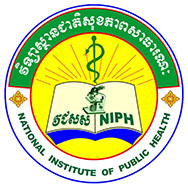Publications Detail
Trends and determinants of acute respiratory infection symptoms among under-five children in Cambodia: Analysis of 2000 to 2014 Cambodia demographic and health surveys
PLOS Glob Public Health Jun, 03, 2023 Show PublicationAcute Respiratory Infections (ARIs) are the leading cause of mortality and morbidity among children under 5 years old and about 1.3 million annually worldwide. Account for 33% of deaths among children under 5 years that occurred in developing countries. In Cambodia, ARIs prevalence in children under 5 years old was 20% in 2000, and 6% in 2014. Hence, the aimed to describe the trends of ARI symptoms among children aged 0–59 months over time using the 2000, 2005, 2010, and 2014 Cambodia Demographic and Health Survey (CDHS) and determined the relationships between socio-demographic, behavioral, and environmental factors with ARI symptoms. We analyzed existing children’s data from 2000, 2005, 2010 and 2014 of Cambodia Demographic and Health Survey (CDHS) that used a two-stage stratified cluster sampling design. We limited our analysis to children born in the last five years prior to the surveys, alive and living in households during interview time. Data were pooled across the four survey years for 29,171 children aged 0–59 months. All statistics were carried out using STATA V16, and survey weights were taken into account for the survey design of the CDHS. We used multiple logistic regression to determine the main predictors of ARI symptoms among children under 5 years. ARI symptoms in the previous two weeks in children aged 0–59 months in Cambodia were 19.9% in 2000 to 8.6% in 2005 to 6.4% in 2010, and 5.5% in 2014. Factors independently associated with increased odds of ARI symptoms were children ages 6–11 months with adjusted odds ratio [AOR = 1.91; 95% CI: 1.53–2.38], 12–23 months [AOR = 1.79; 95% CI: 1.46–2.20], and 24–35 months [AOR = 1.41; 95% CI: 1.13–1.76], smoking mother [AOR = 1.61; 95% CI: 1.27–2.05], and using non-improved toilets in households [AOR = 1.20; 95% CI: 0.99–1.46]. However, the following factors were found to be associated with decreased odds of having ARI symptoms: Mothers with higher education [AOR = 0.45; 95% CI: 0.21–0.94], breastfeeding children [AOR = 0.87; 95% CI: 0.77–0.98], and children born into richest wealth quantile [AOR = 0.73; 95% CI: 0.56–0.95], respectively. Survey 2005 [AOR = 0.36; 95% CI: 0.31–0.42], 2010 [AOR = 0.27; 95% CI: 0.22–0.33], 2014 [AOR = 0.24; 95% CI: 0.19–0.30]. The trends of ARI symptoms among children under five in Cambodia significantly decreased from 2000–2014. Smoking mothers, young children ages (0–35 months), and using non-improved toilet in household are factors that independently increased the likelihood that children would develop ARI symptoms. Inversely, factors were found to be associated with decreased odds of having ARI symptoms: Mothers with higher education, breastfeeding children, and children born into the richest wealth quantile and Survey years. Therefore, government and child family programs must promote maternal education, particularly infant breastfeeding. The government ought to support maternal education and infant breastfeeding in the interest of early childhood care.
